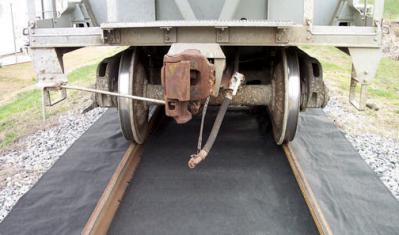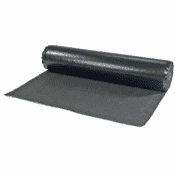Railroads are essential to our transportation network, moving goods and people across vast distances efficiently. However, with the benefits of rail transport comes the responsibility of maintaining a clean and safe environment. One of the key challenges is managing spills, which can occur from leaks or accidents involving chemicals, fuels, or other hazardous materials. This is where railroad absorbent track mats come into play, offering an effective solution for spill cleanup. In this article, we will explore how these mats can be adapted to diverse rail environments to improve safety and environmental protection.
Understanding Railroad Absorbent Track Mats
Railroad absorbent track mats are specialized mats designed to capture and contain spills on rail tracks. They are typically made from materials that can absorb a variety of liquids, including oils, fuels, and chemicals. These mats are essential for preventing spills from seeping into the ground or waterways, thus protecting the environment and reducing cleanup costs.
Key Features of Track Mats
- High Absorbency: These mats are designed to soak up large amounts of liquid, making them ideal for use in areas with high spill risk.
- Durability: Made to withstand the harsh conditions of rail environments, these mats are resistant to wear and tear.
- Ease of Use: They can be easily deployed and removed, allowing for quick response to spills.

Why Spill Cleanup is Crucial in Rail Environments
Spill cleanup is a critical component of rail maintenance. Chemical spills pose serious risks, including environmental damage, health hazards, and regulatory fines. By effectively managing spills, rail operators can minimize these risks and ensure compliance with environmental regulations.
Environmental Impact
Spills can contaminate soil and water, harming wildlife and ecosystems. Railroad absorbent track mats help mitigate these impacts by containing spills before they spread.
Safety Concerns
Chemical spills can create dangerous conditions for rail workers and nearby communities. Quick and effective spill cleanup is essential to maintaining a safe rail environment.
Regulatory Compliance
Rail operators must adhere to strict environmental regulations. Using track mats can help ensure compliance by preventing unauthorized discharge of hazardous materials.
Adapting Track Mats to Various Rail Settings
Rail environments vary widely, from urban settings with frequent traffic to remote areas with challenging terrain. Adapting track mats to these diverse settings is crucial for effective spill management.
Urban Rail Lines
In urban areas, rail lines often run close to residential and commercial properties. Spills in these areas can have immediate and significant impacts. Track mats in urban settings need to be highly absorbent and easy to deploy quickly to minimize disruption and risk.
Industrial Rail Yards
Industrial rail yards are particularly prone to spills due to the frequent loading and unloading of materials. In these settings, track mats should be strategically placed in high-risk areas to provide continuous protection.
Remote Rail Lines
Remote rail lines present unique challenges, including limited access and harsh weather conditions. Track mats used in these areas must be durable and capable of withstanding environmental extremes.

Best Practices for Using Railroad Absorbent Track Mats
To maximize the effectiveness of track mats, rail operators should follow these best practices:
Regular Inspection and Maintenance
Regular inspection of track mats ensures they are in good condition and ready to respond to spills. Maintenance includes replacing saturated mats and repairing any damage.
Strategic Placement
Mats should be placed in areas with the highest risk of spills, such as near switches, loading areas, and fuel stations. This strategic placement helps contain spills at the source.
Training for Rail Workers
Training rail workers on the proper use and handling of track mats is essential. Workers should be familiar with how to deploy and remove mats safely and efficiently.
Innovations in Track Mat Technology
As technology advances, so do the capabilities of railroad absorbent track mats. Innovations in materials and design are enhancing their performance and adaptability.
Advanced Materials
New materials are being developed that offer even greater absorbency and durability. These materials can absorb a wider range of chemicals and withstand more extreme conditions.
Integrated Monitoring Systems
Some track mats now come equipped with sensors that monitor saturation levels and alert operators when they need replacement. This feature helps ensure mats are always ready for use.
Conclusion
Railroad absorbent track mats are a vital tool for managing spills in diverse rail environments. By adapting these mats to the specific needs of different settings, rail operators can protect the environment, enhance safety, and ensure regulatory compliance. As technology continues to evolve, these mats will become even more effective, offering new ways to address the challenges of spill cleanup in the rail industry.
Incorporating these practices and innovations into your rail maintenance strategy will help safeguard your operations and contribute to a cleaner, safer environment for everyone.
Shop at Absorbents Online for Railroad Track Mats
Ensure the safety and environmental protection of your rail operations by investing in high-quality railroad absorbent track mats. Visit https://www.absorbentsonline.com today to explore our extensive range of mats designed to meet the diverse needs of rail environments. Don’t wait for a spill to happen—be proactive and equip your team with the best solutions available. Shop now and protect your railways!

